What Are Wire Rope Slings? Terms, Components, & Configurations
Wire rope slings are versatile and common pieces of rigging equipment. Learning more about the different parts and terms associated with wire rope slings will help you identify if these slings are a good fit for your company.
Are you considering using wire rope slings as an alternative to the alloy steel, metal mesh or synthetic slings your company uses currently?
Before purchasing this type of sling, you want to know what the benefits are to using this product over another sling.
By reading this article, you’ll learn about the:
- Construction of wire rope
- Types of eyes
- Tagging requirements
- Unique sling constructions
- Basic terminology
- Components on inspection reports/orders
- Choosing the best sling eye size
Construction of Wire Rope
Wire rope features many individual wires that form a strand. Multiple strands are wrapped around a core to create the wire rope. The amount of wires in the strand and strands wrapped around the core will determine the flexibility of the wire rope, as well as abrasion resistance for its given application.
Equally as important as the basic construction of the wire rope is going to be the diameter. That diameter determines the working load limit of that sling. Furthermore, when identifying your wire rope sling or choosing what one you want, your supplier has to confirm the sling’s:
- Length
- Eye size and/or end termination
- Construction
The length of the sling is measured by the bearing point of one end to the bearing point of the other end. Also, when using a wire rope sling, it’s important to know the eye size.
According to the ASME B30.9 Slings standard, “the wire rope shall be manufactured and tested in accordance with ASTM A1023/A1023M and ASTM A586. Only new or unused wire rope shall be used for fabricating slings covered in this Chapter. Only regular-lay wire rope shall be used for fabricating slings covered in this Chapter. Rotation-resistant wire rope shall not be used for fabricating slings covered in this Chapter.”
Component Rope vs. Finished Diameter
With Mazzella 7-Part™ Wire Rope Slings, our specialists have found customers are confused by the component rope used and the finished diameter. Anytime you’re reviewing an inspection report or purchasing a sling, you want to identify the component rope. That will determine the finished diameter of the slings.
Make sure you identify that component rope.
Types of Wire Rope Sling Eyes
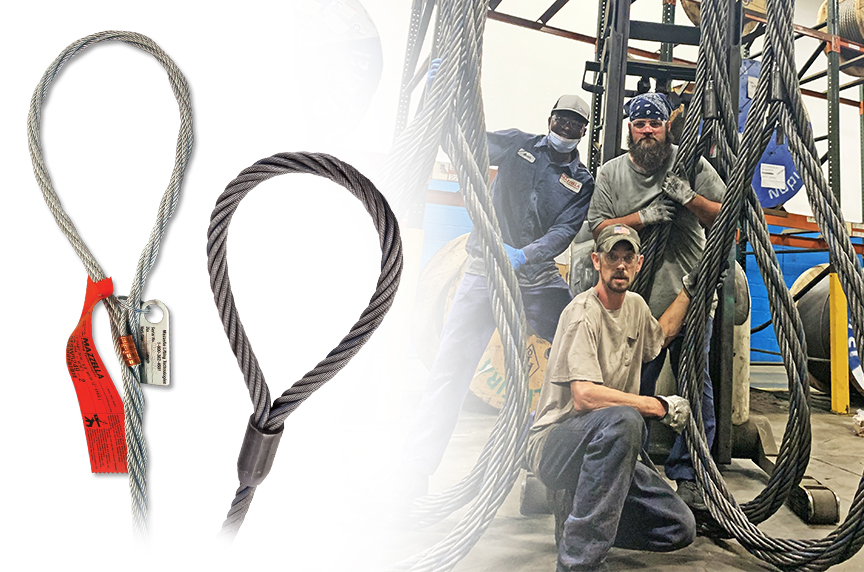
If you have to put the wire rope sling eye over a hook or through a shackle, you want that eye to be the appropriate size and fit.
In determining eye construction, there are two basic types:
- Flemish eye
- Hand-tucked eye
Flemish Eye
A rigger will actually break the wire rope in half, and then, tie it back together, or Flemish it back on itself. Then, we’ll swage down a sleeve over the remaining part of wire rope to create the eye.
Hand-tucked Eye
In this configuration, the individual strands are broken up and woven into the body of the sling to create that eye.
Our specialists have found over time that steel erectors have preferred to use the hand-tucked eyes because of their ease of use. They slide under beams much easier than Flemish-eyed slings. Also, they don’t get caught like the knuckle of the swaged sleeve could.
Thimble Eyes in Wire Rope Slings
Regardless of size, the thimble will help keep the integrity and construction of the eye.
What’s Required on a Wire Rope Sling Tag?
Tagging Requirements for Wire Rope Slings
With any sling, there must be a tag. No tag means no use.
Each tag must have the following information:
- Name or trademark of manufacturer of the sling
- If repairs are done, the entity performing those repairs are required to put their name/trademark on the sling tag
- Diameter of the wire rope used in manufacturing the sling
- Rated load of at least one hitch type
- Number of legs on the sling if more than one
Other information that might be on tags include:
- Serial number from manufacturer to identify the sling
- Hitch capacities for:
- Choke
- Vertical
- Basket
Not all slings will have serial numbers or multiple hitch capacities, but they’re critical pieces of information for your field operators to have when they’re executing lifts.
Unique Wire Rope Sling Constructions
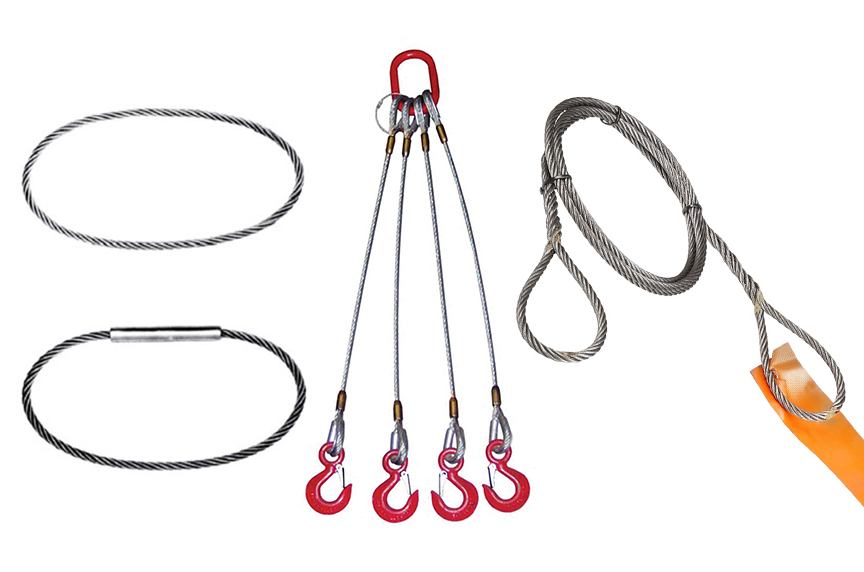
Multi-Leg Wire Rope Slings
The advantages of a multi-leg wire rope sling include:
- Greater flexibility
- Fatigue resistance
- Ergonomically rig up loads easier
Multi-leg slings can come with two, three, or four legs of wire rope connected by and hanging from a master link when lifting a load.
When determining wire rope bridle, you want to choose the correct master link, or pear link, along with the proper size, so it can fit over your crane hook. Also, at the bottom of the wire rope bridle, you want to determine the proper components you’ll need to make safe, successful lifts.
Endless Wire Rope Slings
Also known as grommets, you’d want to use these types of slings when lifting a capacity above the capabilities of an eye-and-eye sling. Endless slings can be used in applications where headroom is an issue because they can be manufactured smaller than an eye-and-eye sling.
Basic Terminology You Need to Know for Wire Rope Slings
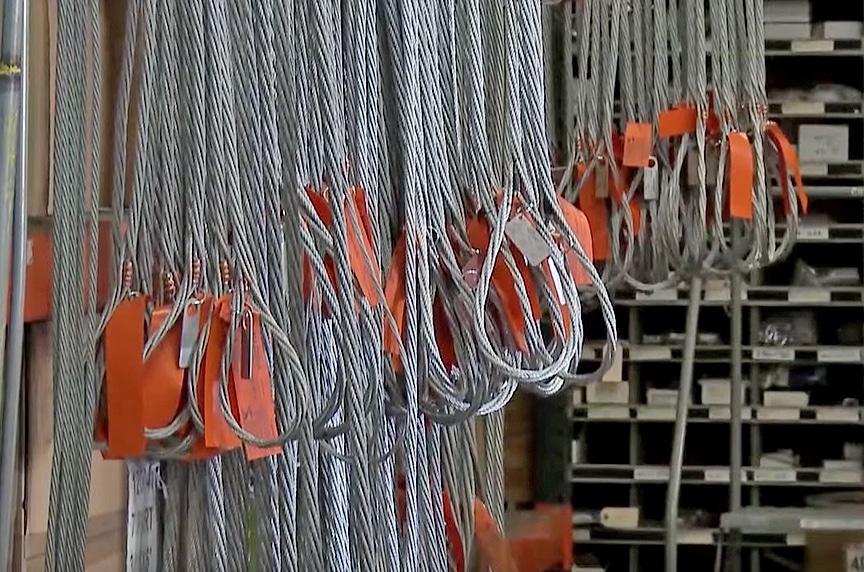
The most common sling terms you’ll encounter are:
- Diameter
- Length
- Wire rope construction
- Single-leg vs. Multi-leg
- Components of an inspection report/order
Also, you’ll hear about the construction and classification of wire rope being used. This will be determined by 6×19, 6×25, or 6×37 typically.
Diameter
This refers to the thickness of the wire rope strands used to make the sling, which can be specified in inches or millimeters. Diameter determines the working load limit of that sling.
Length
The length of the sling is going to be measured by the bearing point of one end to the bearing point of the other end.
Wire Rope Construction
Wire rope construction refers to strand patterns, as well as how many strands are wrapped around the core.
Single-Leg vs. Multi-Leg
Most wire rope slings are single-leg configurations, but multi-leg sling assemblies, often called bridles, can be ordered in double, triple, or quad leg configurations.
Components on Wire Rope Slings Inspection Report/Order
Based on your needs and types of lifts, you’ll need to know if the multi-leg slings will be connected through hooks or a master link. Also, you’ll want to know if it’s being thimblized.
Choosing the Best Sling Eye Size
Eye size is another key component.
Make sure you have the proper eye size for the crane hook or shackle you’re using for overhead lifts for proper D/d ratio.
How Can Mazzella Help With Your Next Steps?
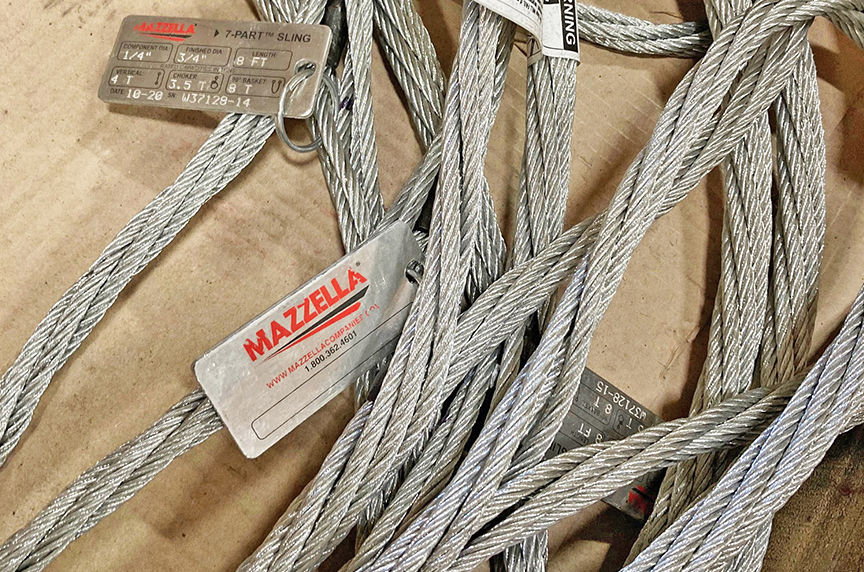
Wire rope slings are versatile and common pieces of rigging equipment.
Learning more about the different parts and terms associated with this product will allow you to determine if will meet the needs of your company and help you conduct safer overhead lifts.
After reading this article, you know many details about wire rope slings, including its:
- Construction
- Types of eyes
- Tagging requirements
- Basic terminology
Click here to contact a lifting specialist to learn more about or purchase new slings. Furthermore, download our Lifting Slings Types & Terms E-Book to learn more about wire rope lifting slings, their best applications, and other types of lifting slings out on the market.
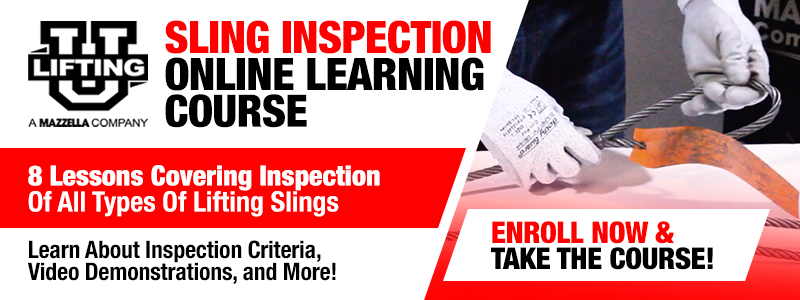

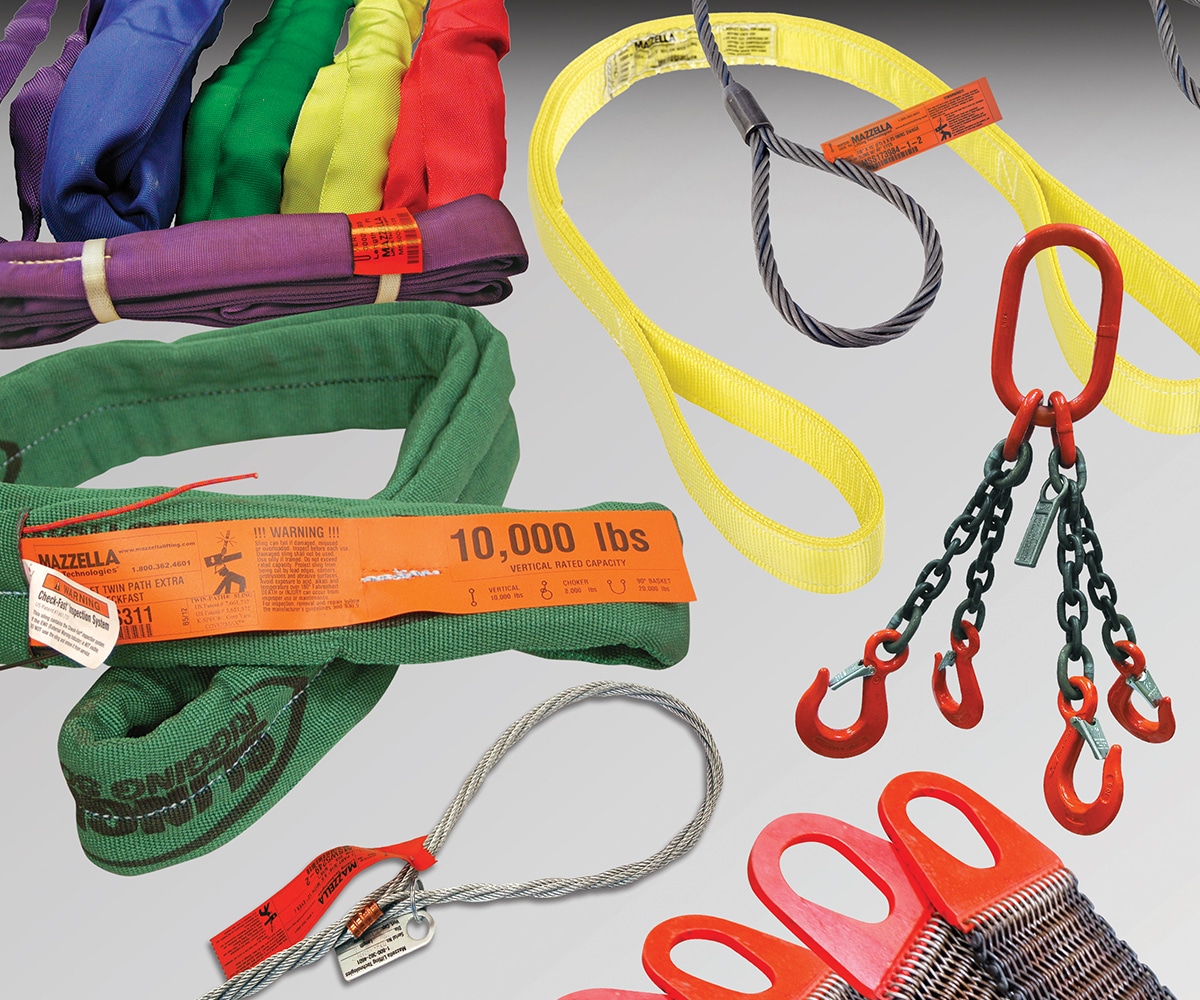
Slings & Assemblies
Are you looking for lifting slings, including chain, wire rope, synthetic flat web, metal mesh, cordage, and single-path / high-performance roundslings? We can help provide the right sling for your needs!
Additionally, if you need sling assemblies—both large and small, we can manufacture bridge cables, crane cables, steel mill cables, and thousands of OEM assemblies.
Contact us today to get the lifting slings and assemblies you need!
Learn more about lifting slings and assemblies!
Copyright 2021. Mazzella Companies.

